Retromobile, Paris February 2019, Part 2
The show continued with the 100 years of Citroën with a display of Henri Chapron bodied DS and CX cars, which appear to be from their Conservatoire. Each one having been lovingly hand crafted in Paris, it seemed fitting that they were celebrated in this way. Quite a large stand away from the main Citroën display and layed out so you could get a really good look at the cars from around the stand. Luckily though I was allowed on for a closer look.
There were some familiar sights, one of which being the CX Prestige Landaulet, some of them finding homes with heads of state.
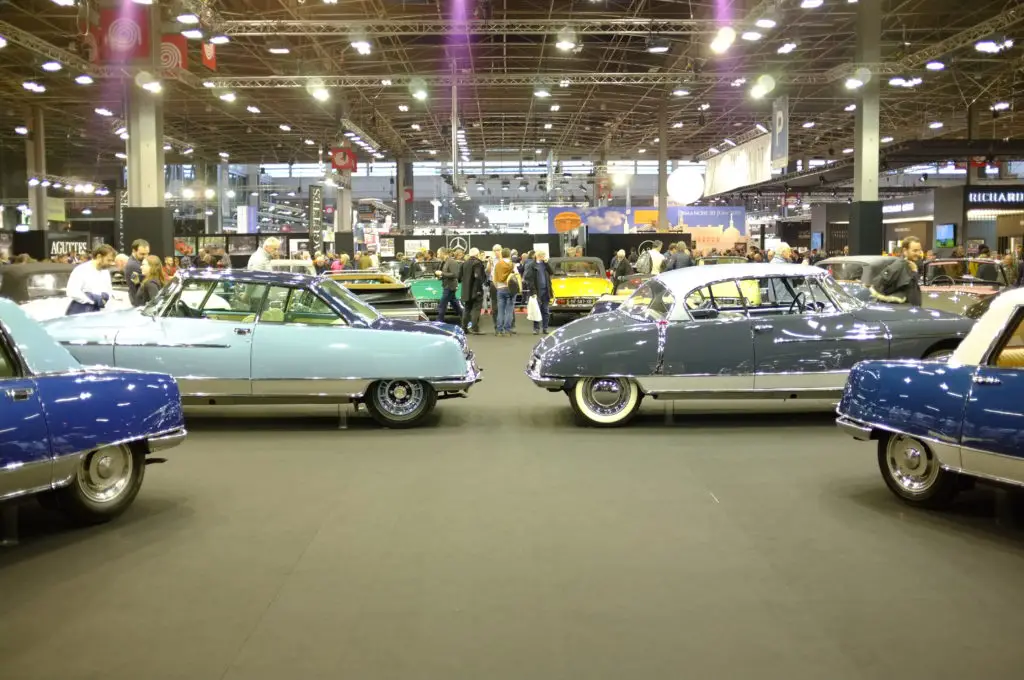

 More creations included the stunning SM Mylord Décapotable, quite possibly one of the most stunning cars ever made. A rare car as only 6 were produced, under a kind of trial for Citroën by Henri, but proving too expensive for any kind of production. Allegedly they cost around 130,000 francs, which was twice the cost of a standard SM and nearly as much as a Ferrari Daytona. Only six were supposed to have been made, one destroyed by fire. So with very few left you can imagine how much they might be, if you could find one for sale.
More creations included the stunning SM Mylord Décapotable, quite possibly one of the most stunning cars ever made. A rare car as only 6 were produced, under a kind of trial for Citroën by Henri, but proving too expensive for any kind of production. Allegedly they cost around 130,000 francs, which was twice the cost of a standard SM and nearly as much as a Ferrari Daytona. Only six were supposed to have been made, one destroyed by fire. So with very few left you can imagine how much they might be, if you could find one for sale.
 Henri started out with Citroën with their newly launched DS, initially buying them and creating convertibles before Citroën made them official, décapotable usines.
Henri started out with Citroën with their newly launched DS, initially buying them and creating convertibles before Citroën made them official, décapotable usines.
 Although his talent was also used to create coupe variants.
Although his talent was also used to create coupe variants.
 The early DS19 Le Paris with the single lamps are particularly pretty. Essentially a coupe version of a Croisette with the ‘factory’ rear wings. The angled chrome strip on the rear means this example was 1959 on.
The early DS19 Le Paris with the single lamps are particularly pretty. Essentially a coupe version of a Croisette with the ‘factory’ rear wings. The angled chrome strip on the rear means this example was 1959 on.
 The DS21 le Léman below first appeared in 1966 and only available in coupe form, still, it is rather elegant. This being a later car as it has the facelifted nose from late 1967, the 1968 model year, with the headlamps under a perspex canopy. The inner pair would swivel up to 80 degrees in the direction of travel. This feature was claimed to be the first mass market car to contain this advancement. Tucker often being credited with the first of these in 1948, but Tatra of the former Czechoslovakia did this with the T77a, with its central third headlight being linked to the steering.
The DS21 le Léman below first appeared in 1966 and only available in coupe form, still, it is rather elegant. This being a later car as it has the facelifted nose from late 1967, the 1968 model year, with the headlamps under a perspex canopy. The inner pair would swivel up to 80 degrees in the direction of travel. This feature was claimed to be the first mass market car to contain this advancement. Tucker often being credited with the first of these in 1948, but Tatra of the former Czechoslovakia did this with the T77a, with its central third headlight being linked to the steering.
 Speaking of Daytonas, there were a few on display, some available to buy. Sadly I couldn’t afford one, but I quite like the white example on the Hödlmayr Classic Car Centre stand. Even though the dealer is Austrial, the car was UK registered, although left hand drive. Wouldn’t put me off…
Speaking of Daytonas, there were a few on display, some available to buy. Sadly I couldn’t afford one, but I quite like the white example on the Hödlmayr Classic Car Centre stand. Even though the dealer is Austrial, the car was UK registered, although left hand drive. Wouldn’t put me off…

 And if you didn’t like the white, you could have one in yellow.
And if you didn’t like the white, you could have one in yellow.
 One of the other big crowd drawing stands was Lukas Huni with a collection of rare and colourful Lancias. Five Stratos lined up at the front of the stand, each one in a vibrant 70s shade. But behind the attention grabbing front row were a few more gems.
One of the other big crowd drawing stands was Lukas Huni with a collection of rare and colourful Lancias. Five Stratos lined up at the front of the stand, each one in a vibrant 70s shade. But behind the attention grabbing front row were a few more gems.

 This stunning B24 Aurelia Spider with hardtop was just stunning. Introduced in 1955 with Pininfarina coachwork this model had 200mm taken out of the regular Aurelia wheelbase and featured no external door handles to emphasise the sleek lines. This didn’t last long as many of the car’s impracticalities were addressed for the Convertible replacement a year or so later.
This stunning B24 Aurelia Spider with hardtop was just stunning. Introduced in 1955 with Pininfarina coachwork this model had 200mm taken out of the regular Aurelia wheelbase and featured no external door handles to emphasise the sleek lines. This didn’t last long as many of the car’s impracticalities were addressed for the Convertible replacement a year or so later.

 This D23 racer was one of a five car entry into the famous Carrera Paramericana race in Mexico. Driven by Italian racing driver Giovanni Bracco it unfortunately retired with a broken wheel, the three winners were all Lancia’s, two B24s and the other B23 in third.
This is the only original B23 in existence and is rare as it’s blue, not something usually applied to Italian racing cars and it is the original colour scheme applied to the car from new. It’s debut race was a second place at Monza driven by Felice Bonetto. It’s part of the Louwman collection in The Hauge in the Netherlands. one of the largest and most beautiful collections in the world. I feel a Jalopy visit would be appropriate.
This D23 racer was one of a five car entry into the famous Carrera Paramericana race in Mexico. Driven by Italian racing driver Giovanni Bracco it unfortunately retired with a broken wheel, the three winners were all Lancia’s, two B24s and the other B23 in third.
This is the only original B23 in existence and is rare as it’s blue, not something usually applied to Italian racing cars and it is the original colour scheme applied to the car from new. It’s debut race was a second place at Monza driven by Felice Bonetto. It’s part of the Louwman collection in The Hauge in the Netherlands. one of the largest and most beautiful collections in the world. I feel a Jalopy visit would be appropriate.

 This also rather stunning Lancia Flaminia convertible was another coachbuilt car, this time the aluminium body was by touring of Italy. These stunning cars were built over a tubular steel frame, not something you see so much of these days. A mainstream manufacturer seeking outside specialists to create the bodywork, many of them disappearing and some being absorbed into the manufacturers themselves.
Touring, the full name being CarrozzeriaTouring Superleggera, had it’s origins in Milan in 1925, and had gone by the end of 1966. Famous for the stunning bodywork and Superleggera construction, that’s lightweight in Italian of course. The company name has been resurrected and is now attached to a new firm provideing non automotive design, homologation, historic vehicle restoration and of course coachbuilding.
This also rather stunning Lancia Flaminia convertible was another coachbuilt car, this time the aluminium body was by touring of Italy. These stunning cars were built over a tubular steel frame, not something you see so much of these days. A mainstream manufacturer seeking outside specialists to create the bodywork, many of them disappearing and some being absorbed into the manufacturers themselves.
Touring, the full name being CarrozzeriaTouring Superleggera, had it’s origins in Milan in 1925, and had gone by the end of 1966. Famous for the stunning bodywork and Superleggera construction, that’s lightweight in Italian of course. The company name has been resurrected and is now attached to a new firm provideing non automotive design, homologation, historic vehicle restoration and of course coachbuilding.
 One of the other big celebrations was for the Mini and it’s 60th anniversary. For something introduced in 1959 it endured a long production run only ending in October 2000. Not too much changed from the original, so much that you instantly recognise the shape of any of the variants.
Spread along the elevated walkway between the halls was a collection of original minis, from Mk1 850s to modified racers.
The Mini is iconic and I couldn’t really add anything to what has already been said. The collection here was stunning, and had a couple of Clubmans too. I’ve always rather liked them.
One of the other big celebrations was for the Mini and it’s 60th anniversary. For something introduced in 1959 it endured a long production run only ending in October 2000. Not too much changed from the original, so much that you instantly recognise the shape of any of the variants.
Spread along the elevated walkway between the halls was a collection of original minis, from Mk1 850s to modified racers.
The Mini is iconic and I couldn’t really add anything to what has already been said. The collection here was stunning, and had a couple of Clubmans too. I’ve always rather liked them.

 This fantastic period 70s brown 1275GT in left hand drive was fabulous.
This fantastic period 70s brown 1275GT in left hand drive was fabulous.
 But, doesn’t the shape suit this touring car rather well.
But, doesn’t the shape suit this touring car rather well.


 There’s more of these in the Facebook gallery.
Simon
There’s more of these in the Facebook gallery.
Simon

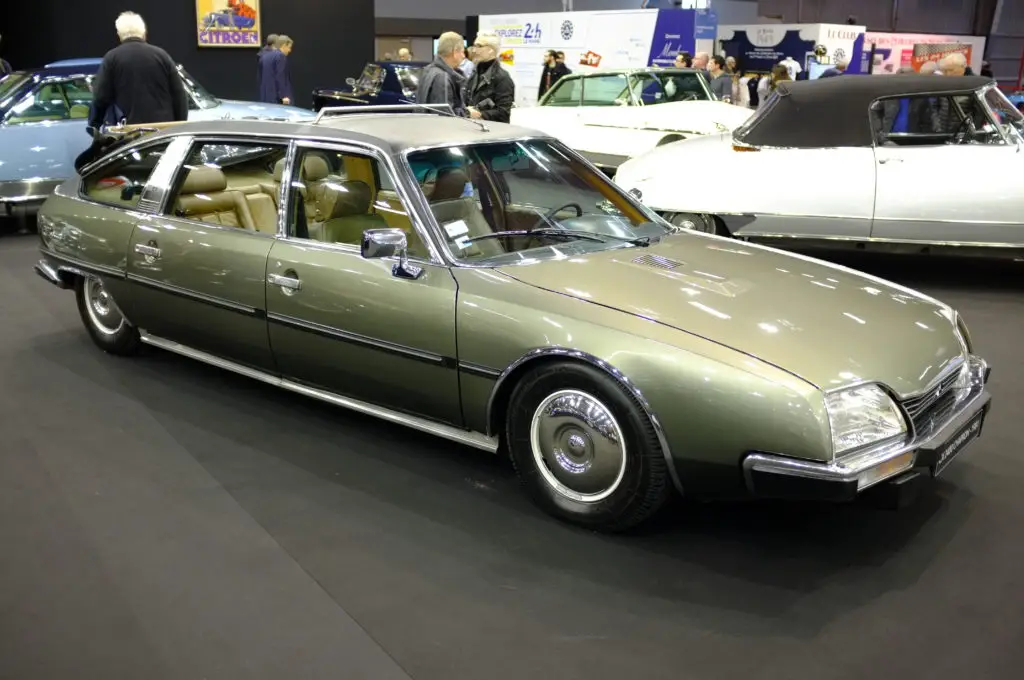
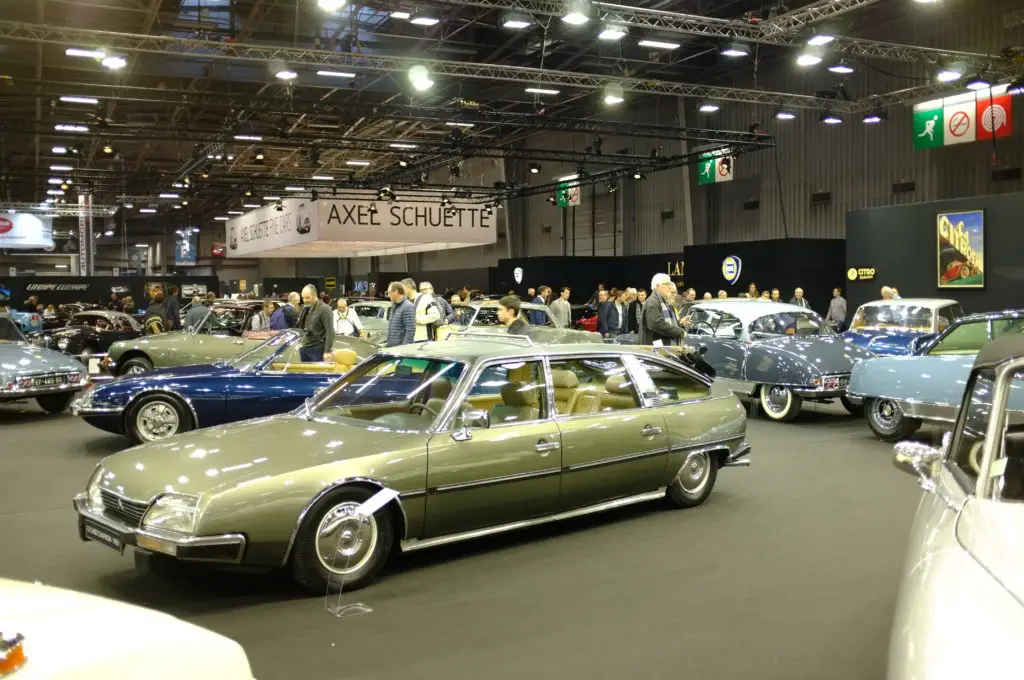 More creations included the stunning SM Mylord Décapotable, quite possibly one of the most stunning cars ever made. A rare car as only 6 were produced, under a kind of trial for Citroën by Henri, but proving too expensive for any kind of production. Allegedly they cost around 130,000 francs, which was twice the cost of a standard SM and nearly as much as a Ferrari Daytona. Only six were supposed to have been made, one destroyed by fire. So with very few left you can imagine how much they might be, if you could find one for sale.
More creations included the stunning SM Mylord Décapotable, quite possibly one of the most stunning cars ever made. A rare car as only 6 were produced, under a kind of trial for Citroën by Henri, but proving too expensive for any kind of production. Allegedly they cost around 130,000 francs, which was twice the cost of a standard SM and nearly as much as a Ferrari Daytona. Only six were supposed to have been made, one destroyed by fire. So with very few left you can imagine how much they might be, if you could find one for sale.
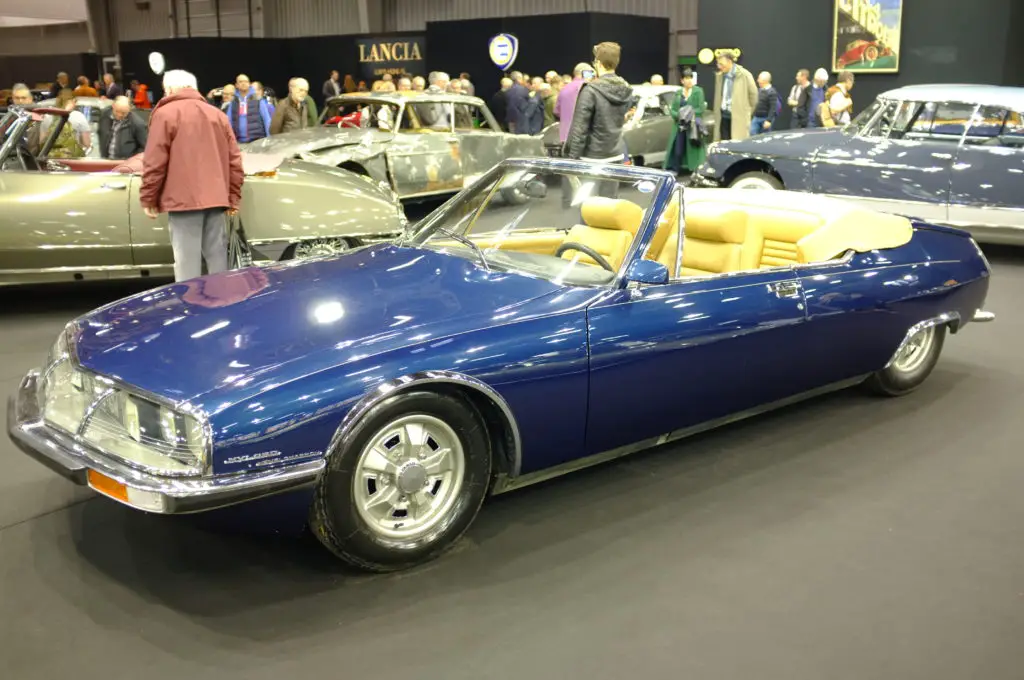 Henri started out with Citroën with their newly launched DS, initially buying them and creating convertibles before Citroën made them official, décapotable usines.
Henri started out with Citroën with their newly launched DS, initially buying them and creating convertibles before Citroën made them official, décapotable usines.
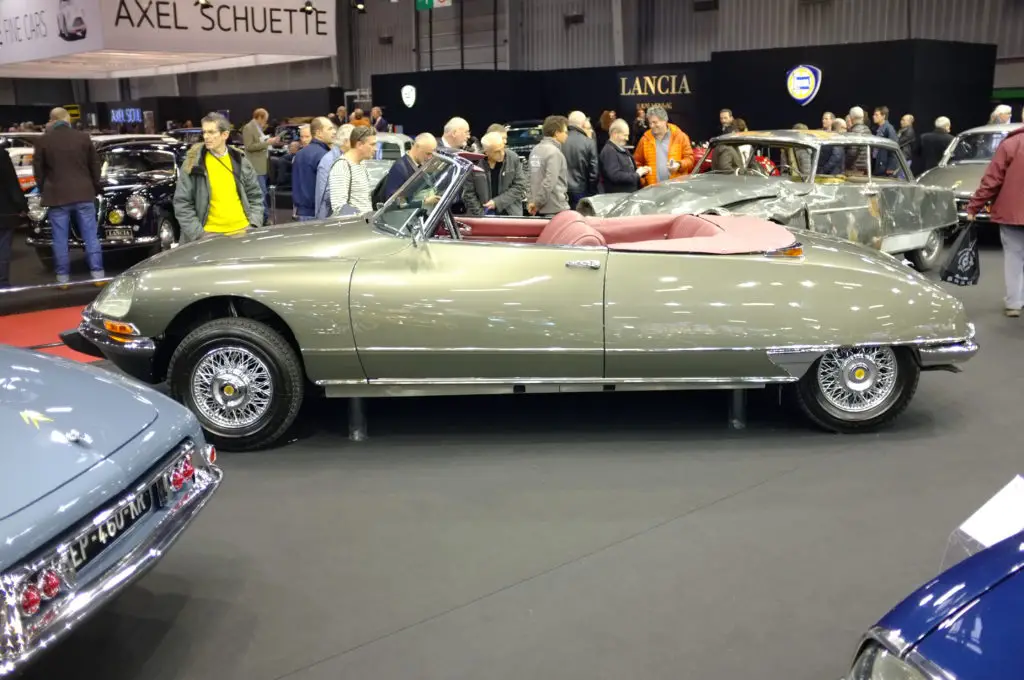 Although his talent was also used to create coupe variants.
Although his talent was also used to create coupe variants.
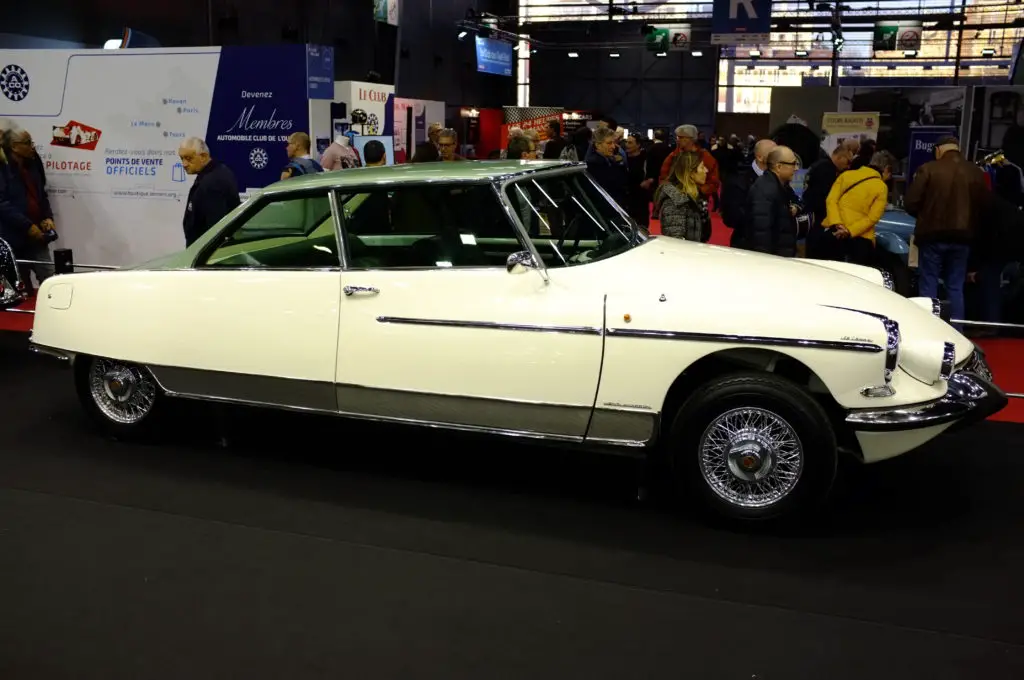 The early DS19 Le Paris with the single lamps are particularly pretty. Essentially a coupe version of a Croisette with the ‘factory’ rear wings. The angled chrome strip on the rear means this example was 1959 on.
The early DS19 Le Paris with the single lamps are particularly pretty. Essentially a coupe version of a Croisette with the ‘factory’ rear wings. The angled chrome strip on the rear means this example was 1959 on.
 The DS21 le Léman below first appeared in 1966 and only available in coupe form, still, it is rather elegant. This being a later car as it has the facelifted nose from late 1967, the 1968 model year, with the headlamps under a perspex canopy. The inner pair would swivel up to 80 degrees in the direction of travel. This feature was claimed to be the first mass market car to contain this advancement. Tucker often being credited with the first of these in 1948, but Tatra of the former Czechoslovakia did this with the T77a, with its central third headlight being linked to the steering.
The DS21 le Léman below first appeared in 1966 and only available in coupe form, still, it is rather elegant. This being a later car as it has the facelifted nose from late 1967, the 1968 model year, with the headlamps under a perspex canopy. The inner pair would swivel up to 80 degrees in the direction of travel. This feature was claimed to be the first mass market car to contain this advancement. Tucker often being credited with the first of these in 1948, but Tatra of the former Czechoslovakia did this with the T77a, with its central third headlight being linked to the steering.
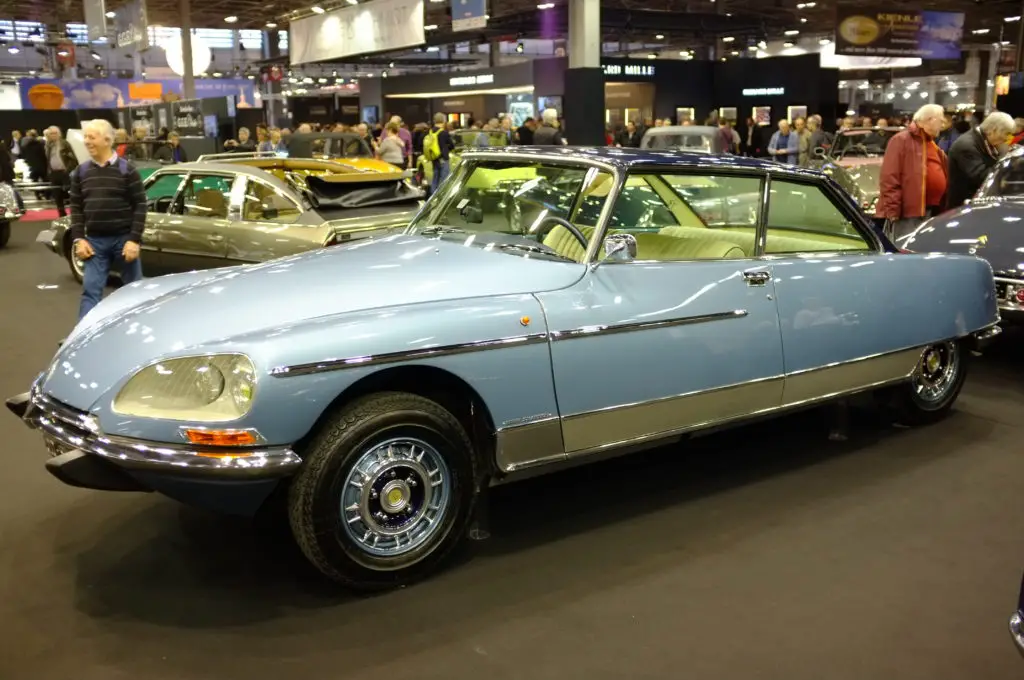 Speaking of Daytonas, there were a few on display, some available to buy. Sadly I couldn’t afford one, but I quite like the white example on the Hödlmayr Classic Car Centre stand. Even though the dealer is Austrial, the car was UK registered, although left hand drive. Wouldn’t put me off…
Speaking of Daytonas, there were a few on display, some available to buy. Sadly I couldn’t afford one, but I quite like the white example on the Hödlmayr Classic Car Centre stand. Even though the dealer is Austrial, the car was UK registered, although left hand drive. Wouldn’t put me off…
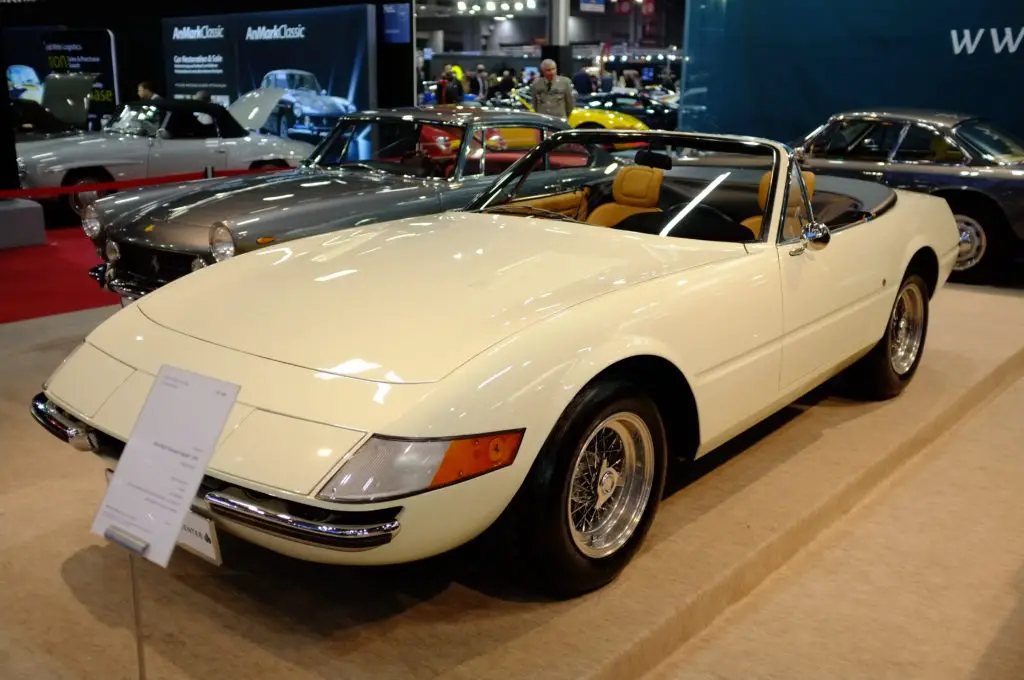
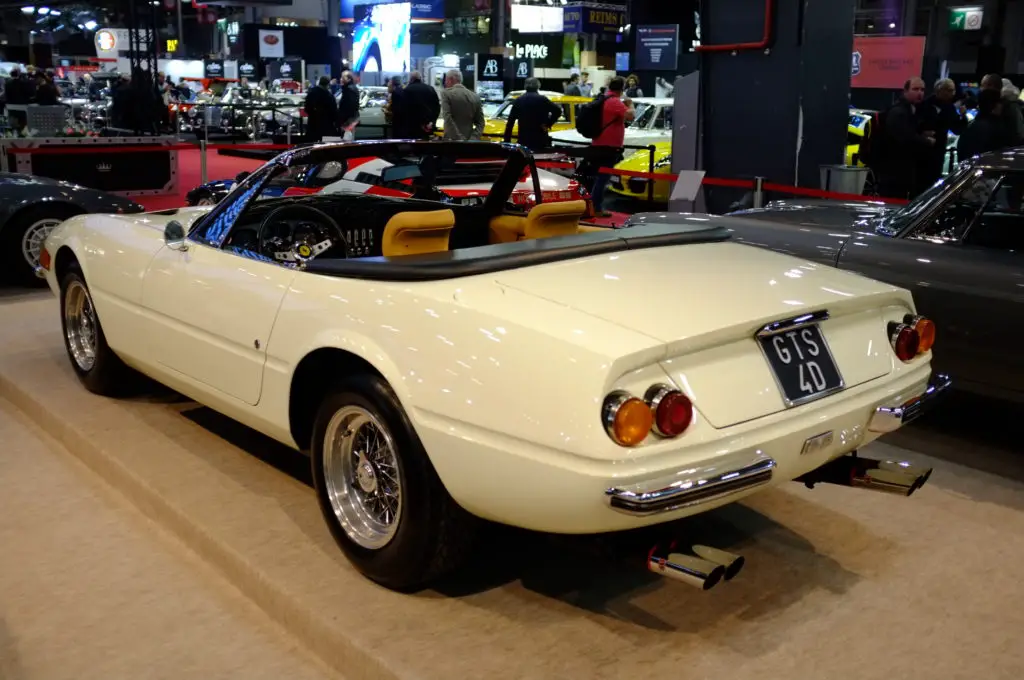 And if you didn’t like the white, you could have one in yellow.
And if you didn’t like the white, you could have one in yellow.
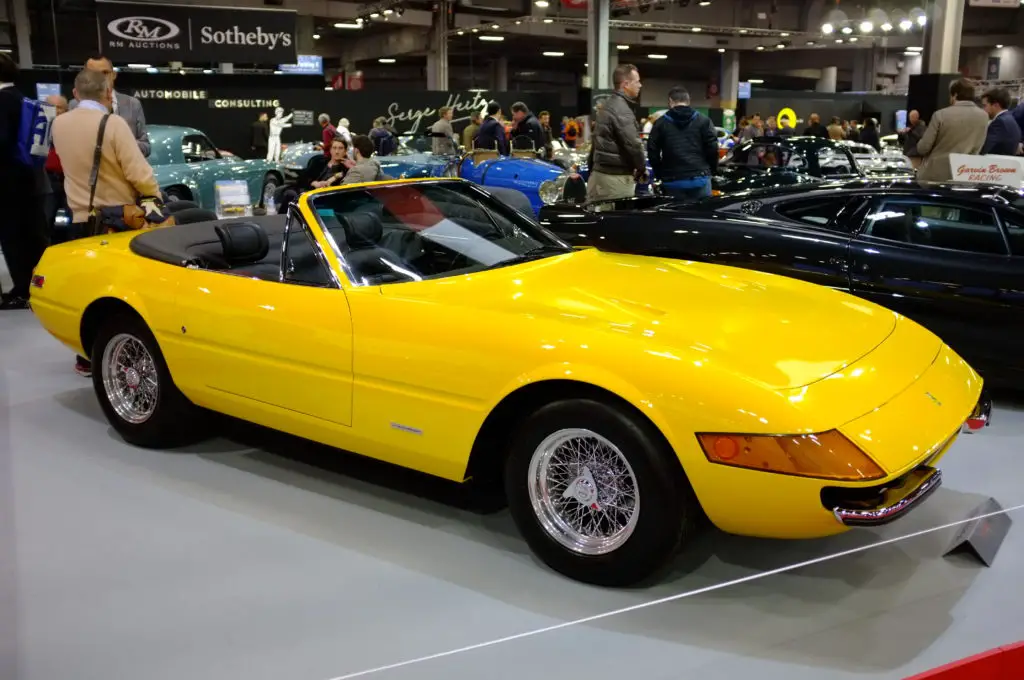 One of the other big crowd drawing stands was Lukas Huni with a collection of rare and colourful Lancias. Five Stratos lined up at the front of the stand, each one in a vibrant 70s shade. But behind the attention grabbing front row were a few more gems.
One of the other big crowd drawing stands was Lukas Huni with a collection of rare and colourful Lancias. Five Stratos lined up at the front of the stand, each one in a vibrant 70s shade. But behind the attention grabbing front row were a few more gems.
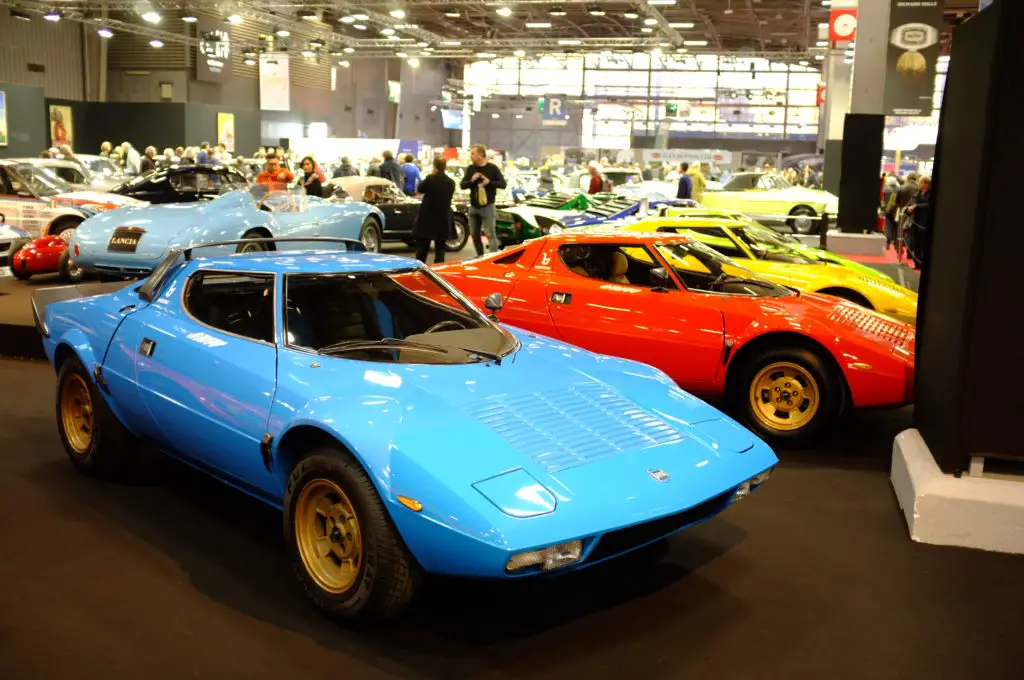
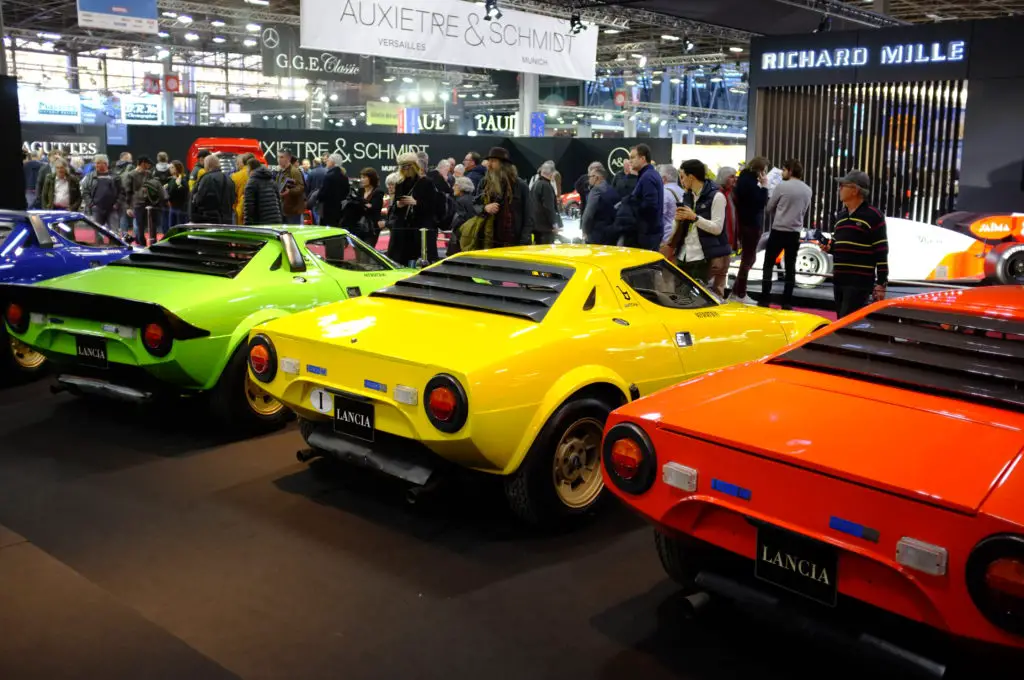 This stunning B24 Aurelia Spider with hardtop was just stunning. Introduced in 1955 with Pininfarina coachwork this model had 200mm taken out of the regular Aurelia wheelbase and featured no external door handles to emphasise the sleek lines. This didn’t last long as many of the car’s impracticalities were addressed for the Convertible replacement a year or so later.
This stunning B24 Aurelia Spider with hardtop was just stunning. Introduced in 1955 with Pininfarina coachwork this model had 200mm taken out of the regular Aurelia wheelbase and featured no external door handles to emphasise the sleek lines. This didn’t last long as many of the car’s impracticalities were addressed for the Convertible replacement a year or so later.
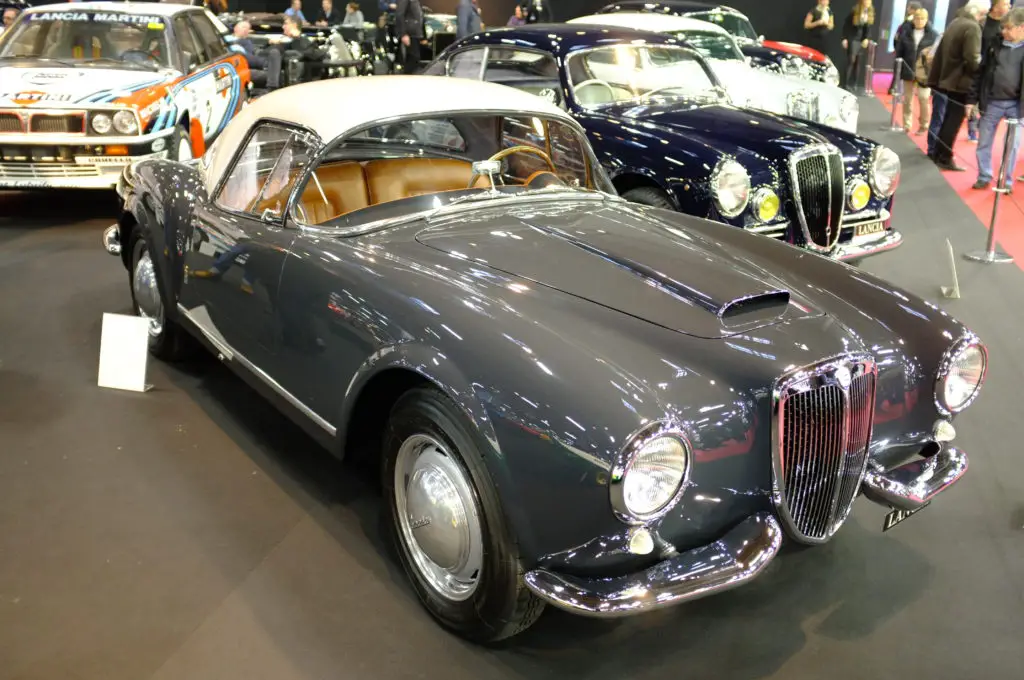
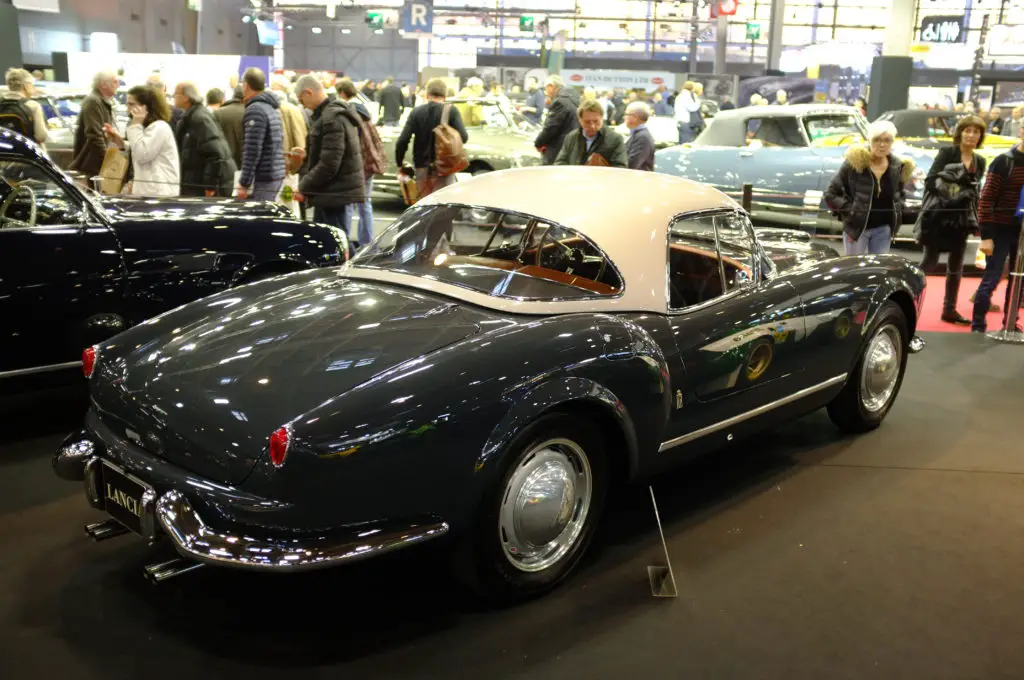 This D23 racer was one of a five car entry into the famous Carrera Paramericana race in Mexico. Driven by Italian racing driver Giovanni Bracco it unfortunately retired with a broken wheel, the three winners were all Lancia’s, two B24s and the other B23 in third.
This is the only original B23 in existence and is rare as it’s blue, not something usually applied to Italian racing cars and it is the original colour scheme applied to the car from new. It’s debut race was a second place at Monza driven by Felice Bonetto. It’s part of the Louwman collection in The Hauge in the Netherlands. one of the largest and most beautiful collections in the world. I feel a Jalopy visit would be appropriate.
This D23 racer was one of a five car entry into the famous Carrera Paramericana race in Mexico. Driven by Italian racing driver Giovanni Bracco it unfortunately retired with a broken wheel, the three winners were all Lancia’s, two B24s and the other B23 in third.
This is the only original B23 in existence and is rare as it’s blue, not something usually applied to Italian racing cars and it is the original colour scheme applied to the car from new. It’s debut race was a second place at Monza driven by Felice Bonetto. It’s part of the Louwman collection in The Hauge in the Netherlands. one of the largest and most beautiful collections in the world. I feel a Jalopy visit would be appropriate.
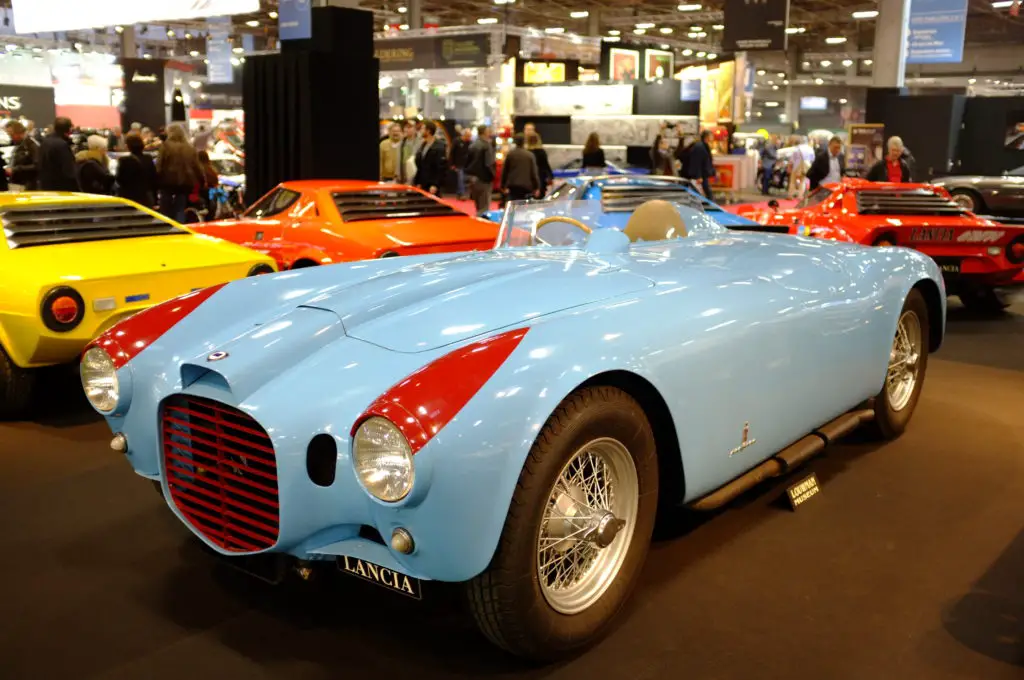
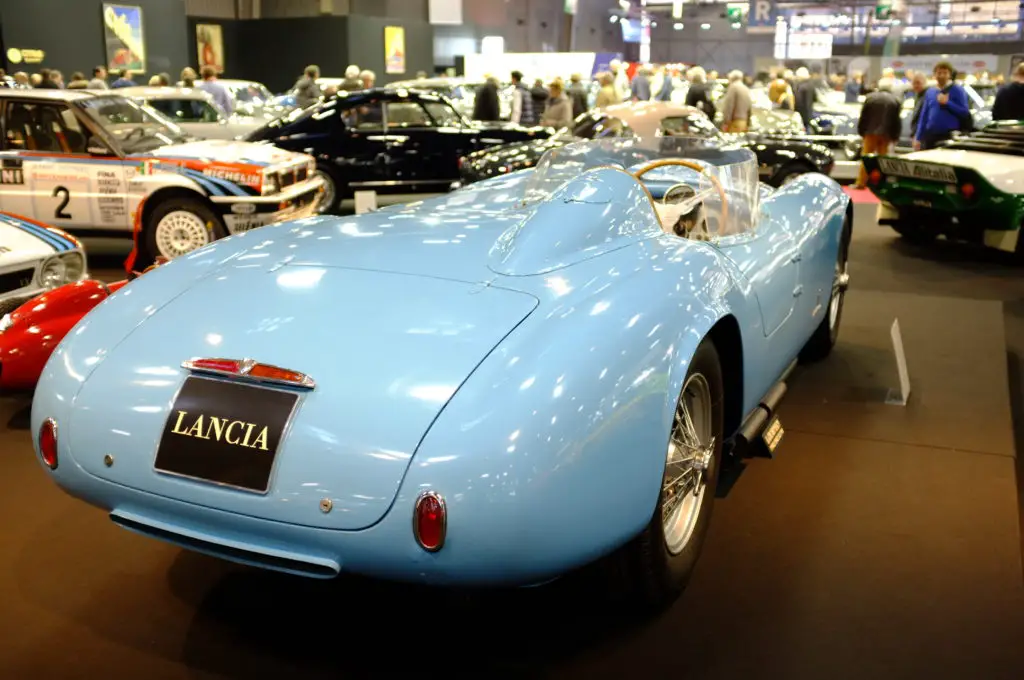 This also rather stunning Lancia Flaminia convertible was another coachbuilt car, this time the aluminium body was by touring of Italy. These stunning cars were built over a tubular steel frame, not something you see so much of these days. A mainstream manufacturer seeking outside specialists to create the bodywork, many of them disappearing and some being absorbed into the manufacturers themselves.
Touring, the full name being CarrozzeriaTouring Superleggera, had it’s origins in Milan in 1925, and had gone by the end of 1966. Famous for the stunning bodywork and Superleggera construction, that’s lightweight in Italian of course. The company name has been resurrected and is now attached to a new firm provideing non automotive design, homologation, historic vehicle restoration and of course coachbuilding.
This also rather stunning Lancia Flaminia convertible was another coachbuilt car, this time the aluminium body was by touring of Italy. These stunning cars were built over a tubular steel frame, not something you see so much of these days. A mainstream manufacturer seeking outside specialists to create the bodywork, many of them disappearing and some being absorbed into the manufacturers themselves.
Touring, the full name being CarrozzeriaTouring Superleggera, had it’s origins in Milan in 1925, and had gone by the end of 1966. Famous for the stunning bodywork and Superleggera construction, that’s lightweight in Italian of course. The company name has been resurrected and is now attached to a new firm provideing non automotive design, homologation, historic vehicle restoration and of course coachbuilding.
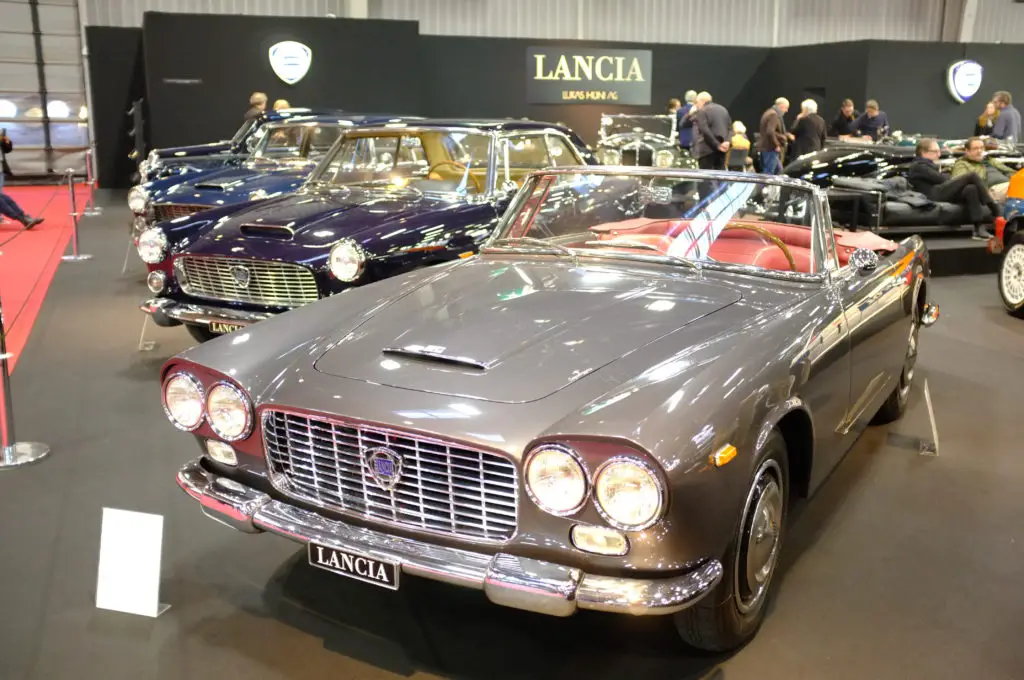 One of the other big celebrations was for the Mini and it’s 60th anniversary. For something introduced in 1959 it endured a long production run only ending in October 2000. Not too much changed from the original, so much that you instantly recognise the shape of any of the variants.
Spread along the elevated walkway between the halls was a collection of original minis, from Mk1 850s to modified racers.
The Mini is iconic and I couldn’t really add anything to what has already been said. The collection here was stunning, and had a couple of Clubmans too. I’ve always rather liked them.
One of the other big celebrations was for the Mini and it’s 60th anniversary. For something introduced in 1959 it endured a long production run only ending in October 2000. Not too much changed from the original, so much that you instantly recognise the shape of any of the variants.
Spread along the elevated walkway between the halls was a collection of original minis, from Mk1 850s to modified racers.
The Mini is iconic and I couldn’t really add anything to what has already been said. The collection here was stunning, and had a couple of Clubmans too. I’ve always rather liked them.
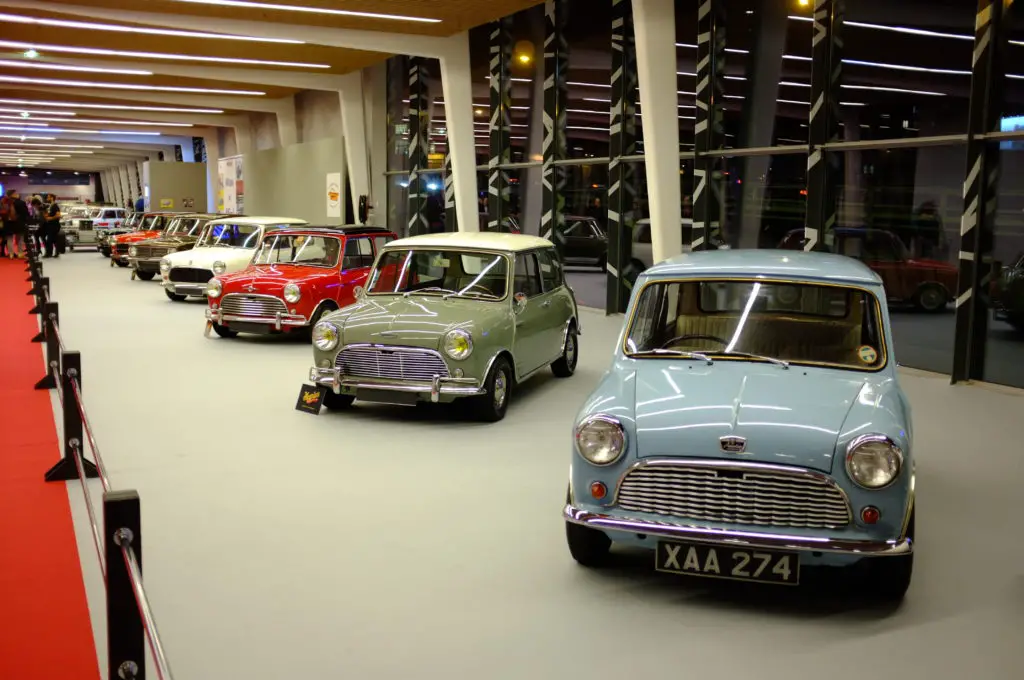
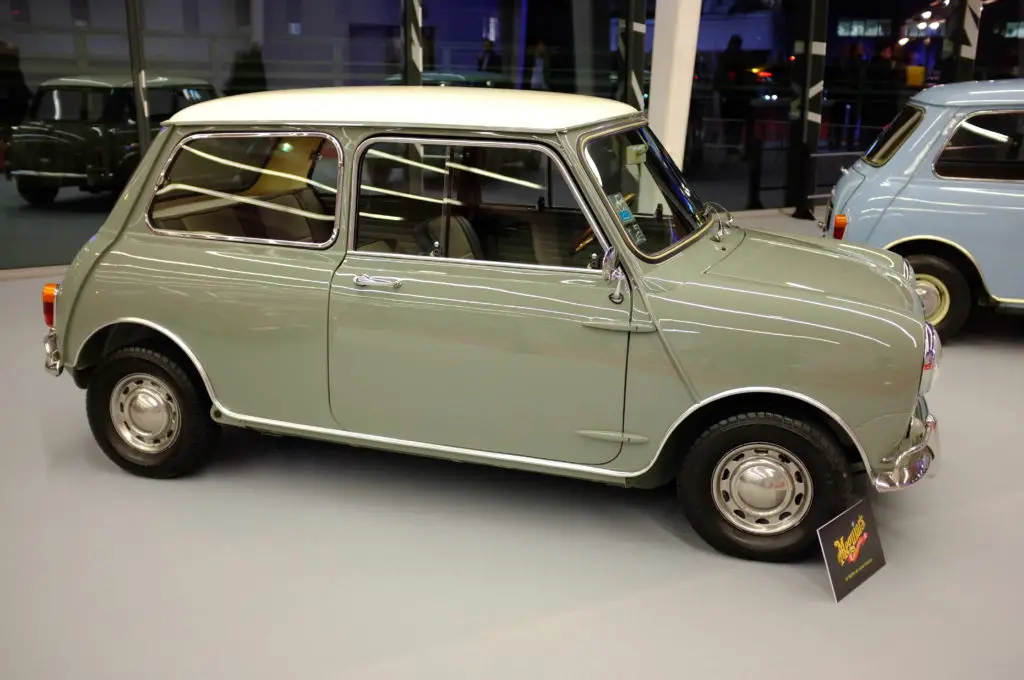 This fantastic period 70s brown 1275GT in left hand drive was fabulous.
This fantastic period 70s brown 1275GT in left hand drive was fabulous.
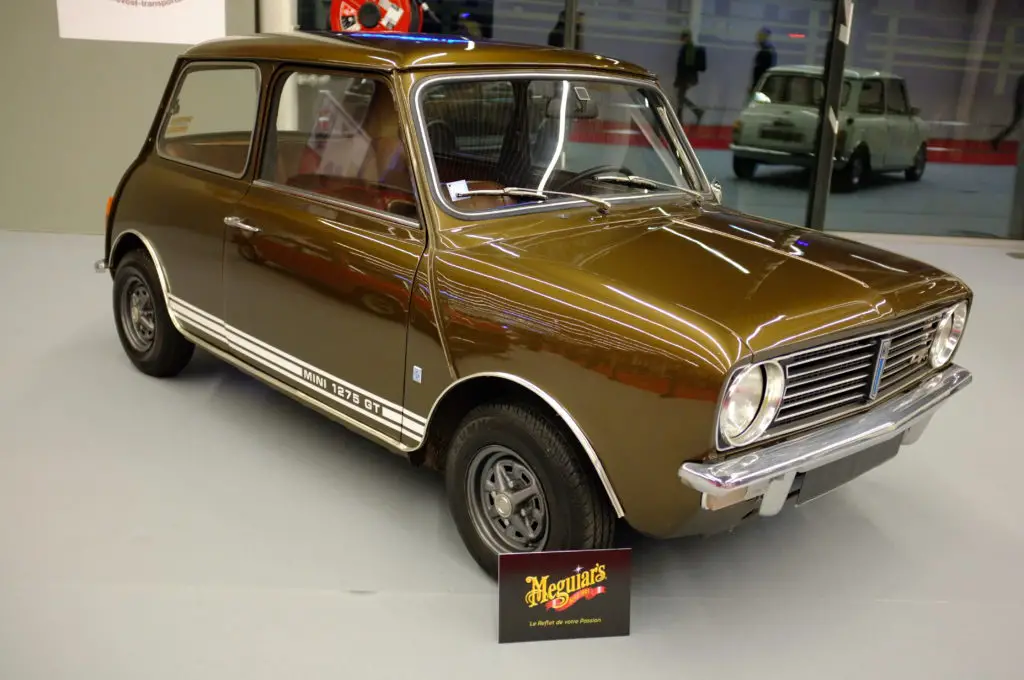 But, doesn’t the shape suit this touring car rather well.
But, doesn’t the shape suit this touring car rather well.
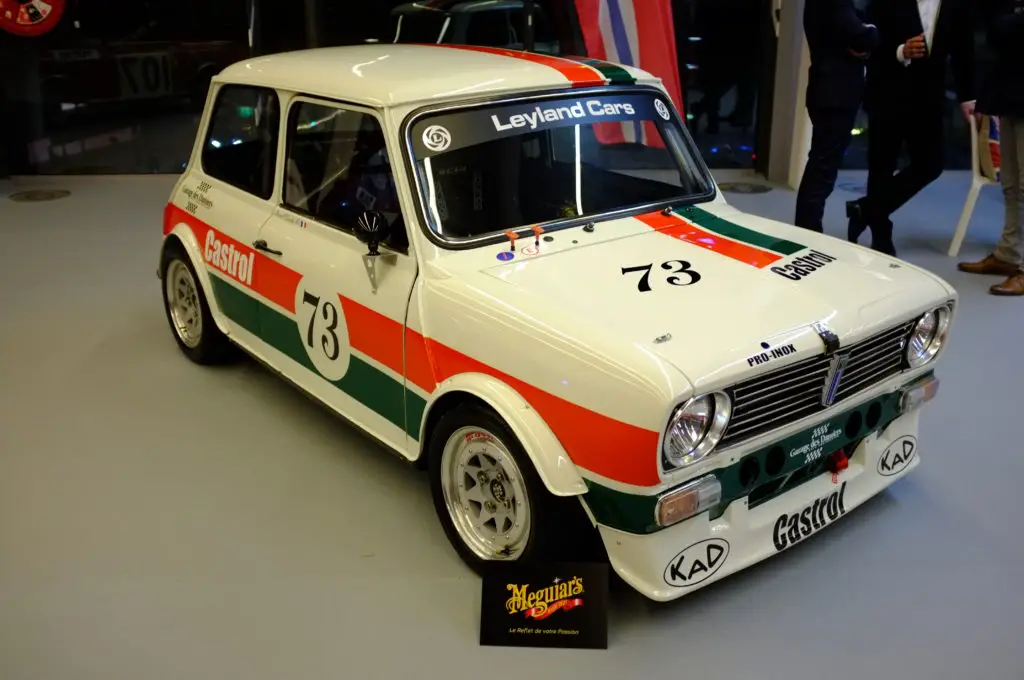
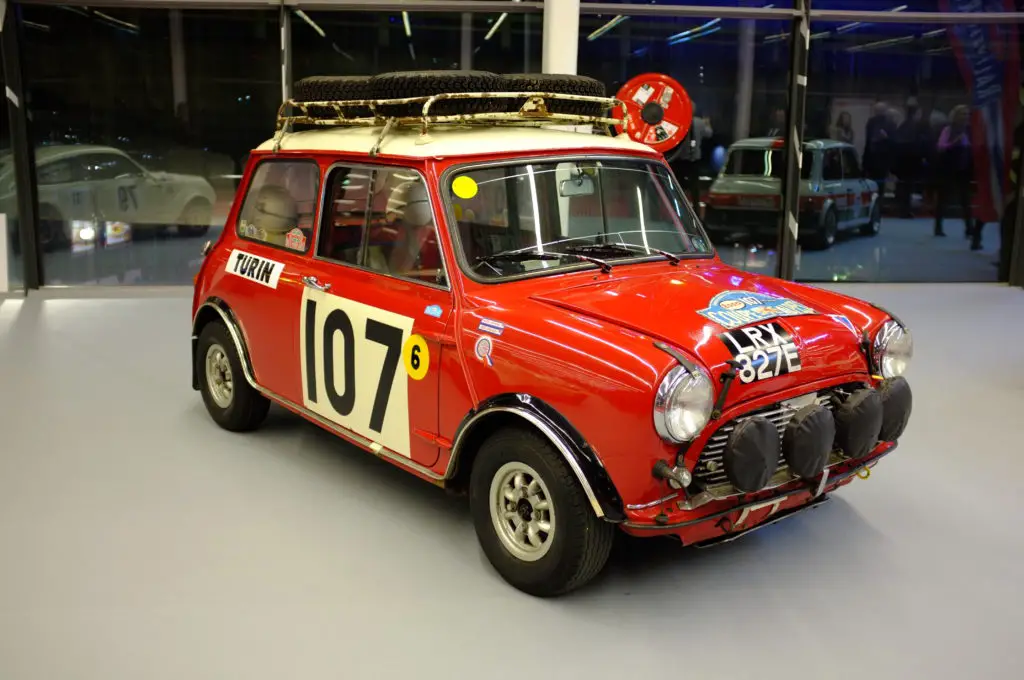
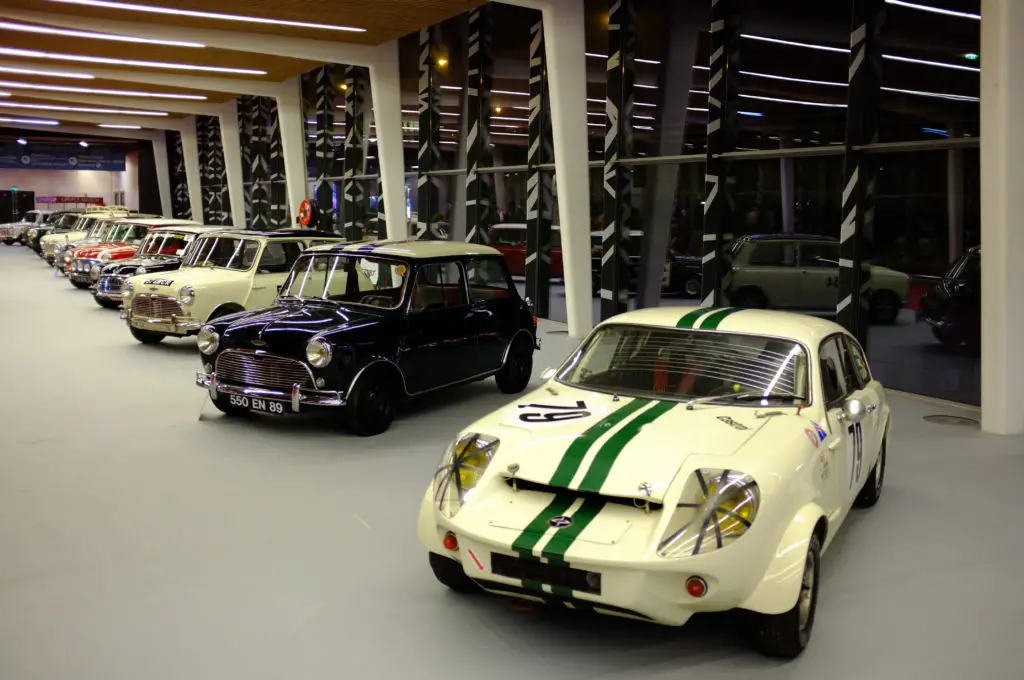 There’s more of these in the Facebook gallery.
Simon
There’s more of these in the Facebook gallery.
Simon 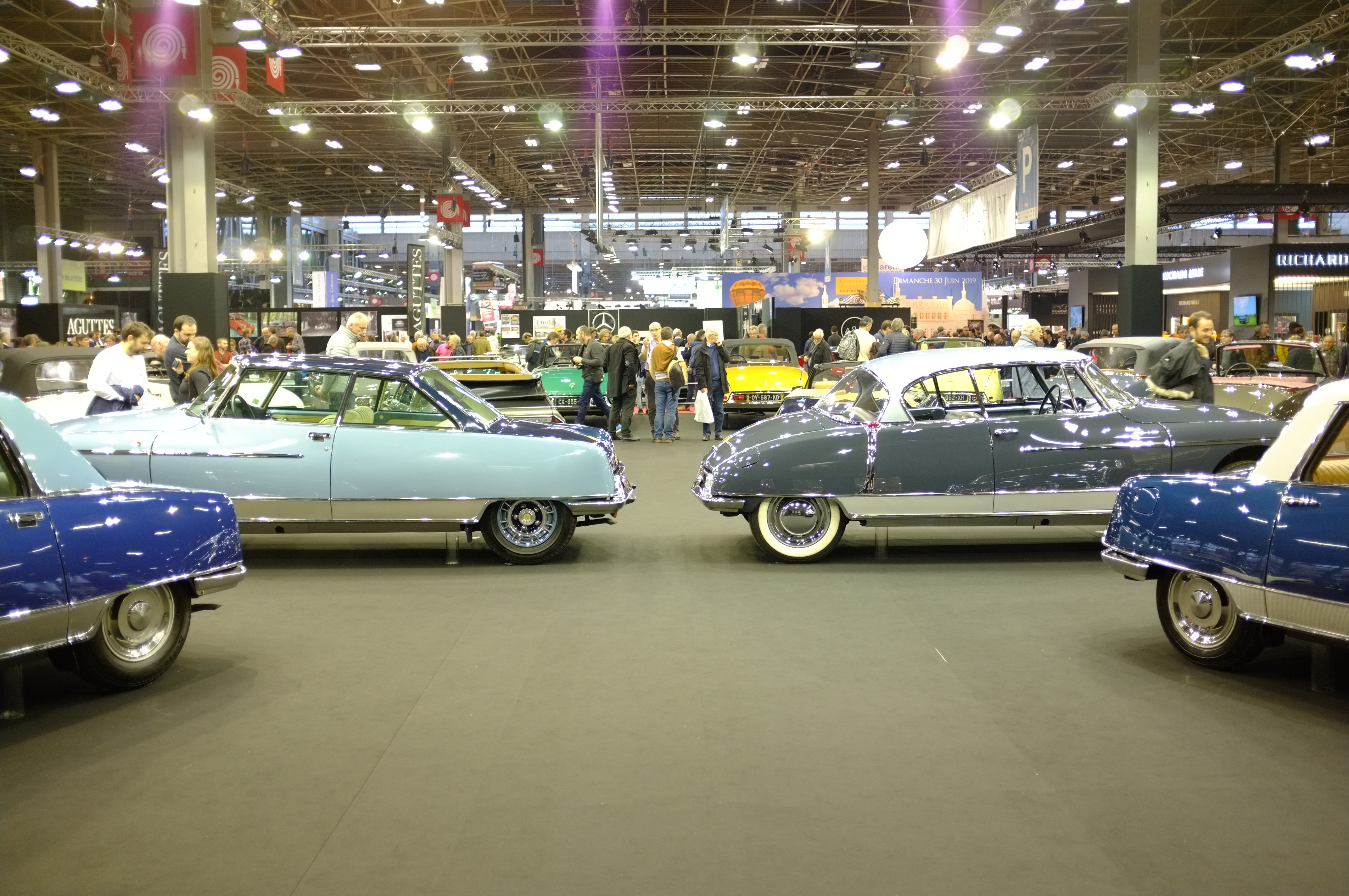
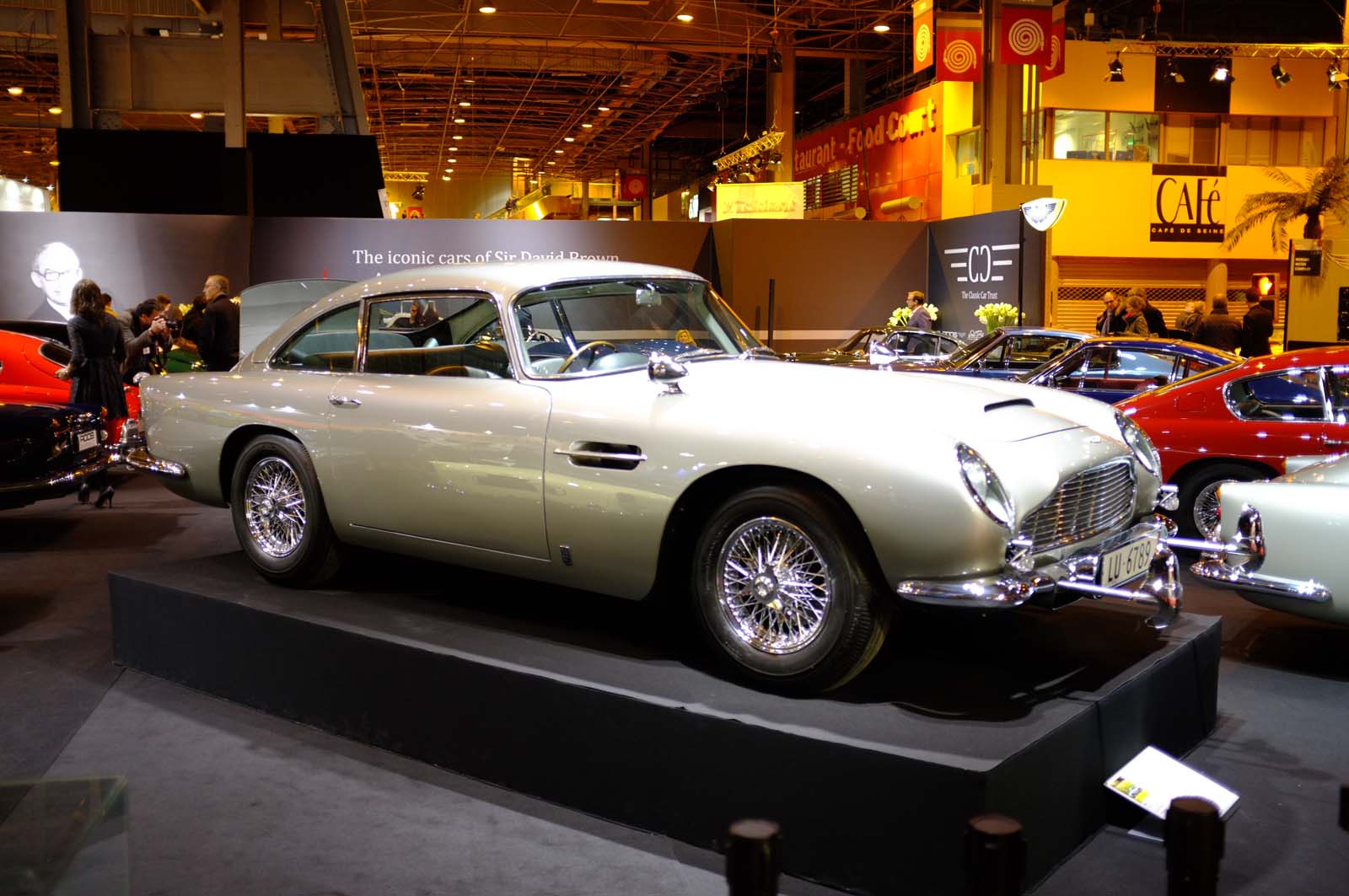
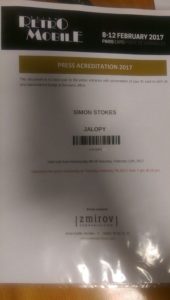
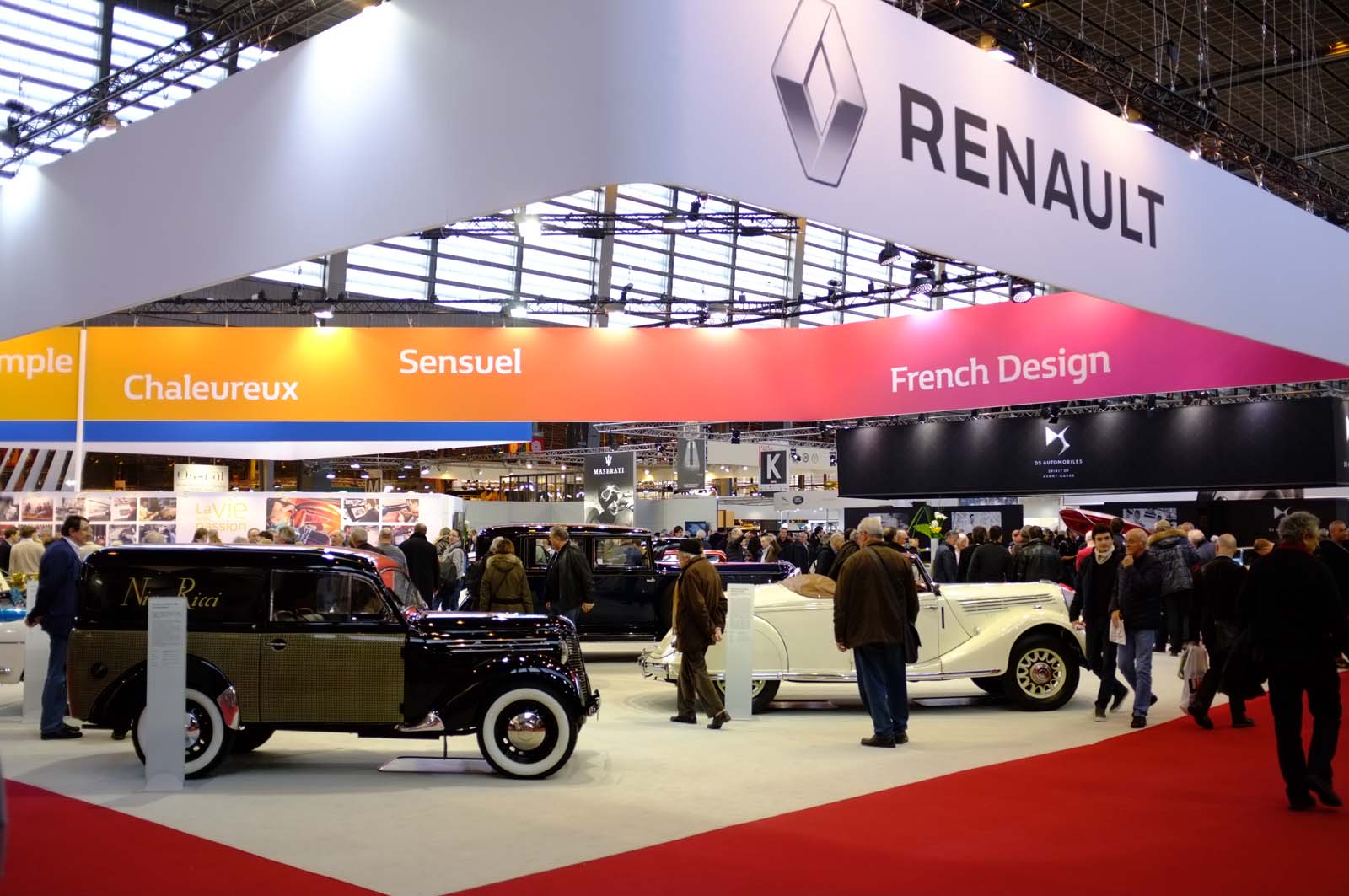
Pingback: Mini, For 20 Years It's Been The Premium Segment Small Car of Choice - Jalopy